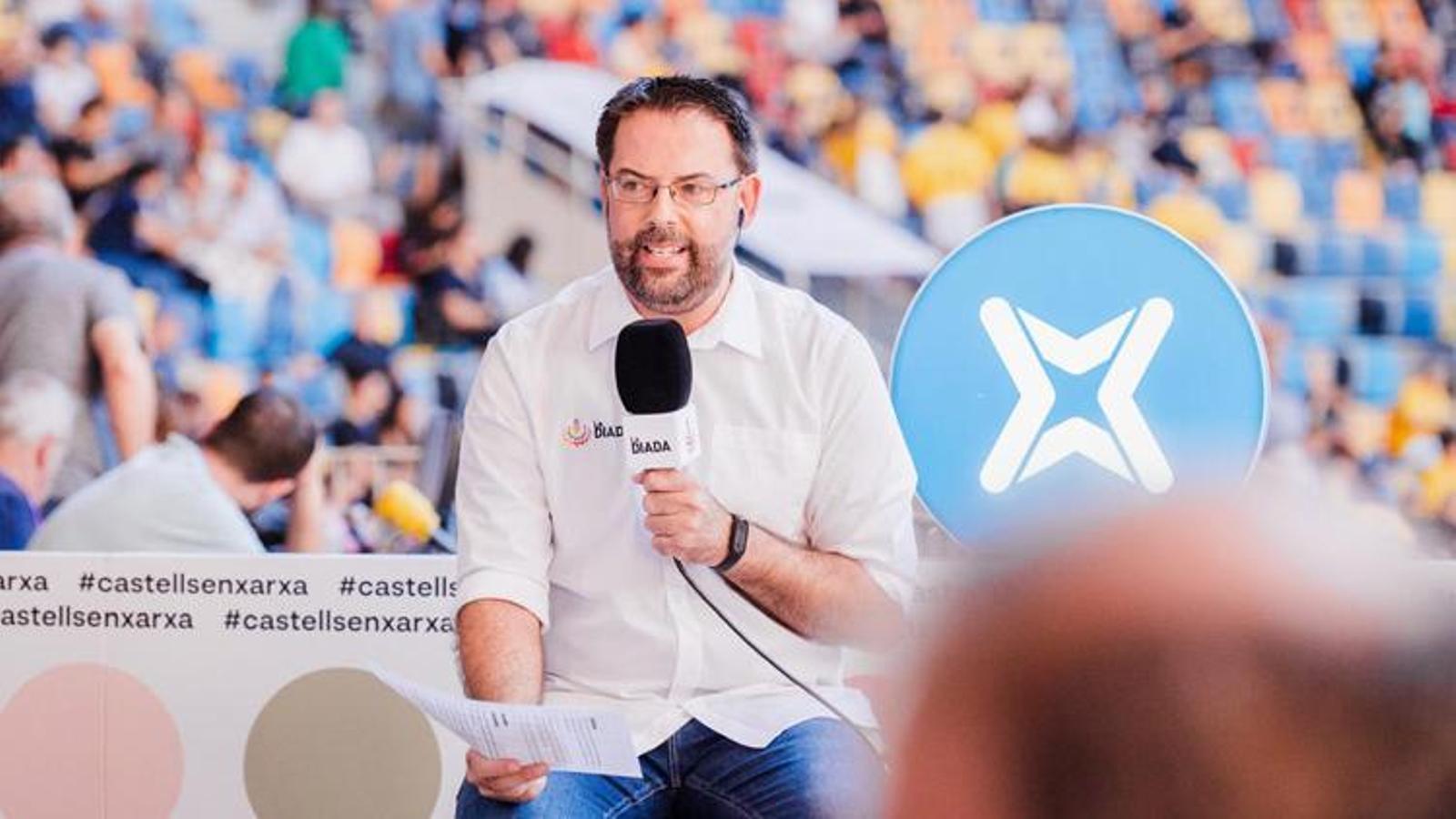Carles Cortés: "The general public should be asked to make a small effort to understand the human towers."
Narrator of the human tower broadcasts on La Xarxa

The human towers have established themselves as one of the spearheads of La Xarxa, and among the main voices, Carles Cortés stands out. The Tarragona native is the narrator of the broadcasts of the human tower performances and the presenter, along with Aina Mallol, of the Finite and in between, a TAC12 human tower-themed program.
What was your first contact with human towers?
— I had schoolmates who went to the Tarragona Youth Festival or the Tarragona Children's Festival and I liked to go and see the human tower festivals of Sant Magí, Sant Tecla and especially the Pilar on foot, because here in Tarragona we have a lot of affection for it.
However, you've never worn a band's shirt. Why?
— The factor that probably weighs the most is commitment. I don't know if I'd be able to do what the castellers do, rehearsing two days a week, regardless of the weather conditions. Some people only go for one day, but if I'm involved in any field, I want to be there all the time, and I feel like I wouldn't have that commitment.
And what attracts you about human towers?
— The ability to overcome self-improvement, to build castles, this work and routine to achieve the goal. I like to see what the groups' challenges are, whether they achieve them or not.
How did the opportunity to provide information on human towers arise?
— In 1993, I had some friends who were making a program about human castles. Since I really liked human castles and wanted to study journalism, they suggested I collaborate with them. This led me to join the human castle team at Tarragona Ràdio. I left for several years afterward, but in 2012, the opportunity arose to collaborate with TAC12 on human castles, and in 2014, I was given the opportunity to join La Xarxa's human castle project.
What is the mission of human towers on television?
— I have the feeling that everyone asks us to make an effort to make human towers understandable to the general public, but I think we should also ask the general public to make a small effort to understand them. We can't keep saying what's bullshit every day. Human towers are very complex and difficult, but there are some general things that I think we should have mastered.
How do you find the balance between addressing an audience that is knowledgeable or not?
— In the early years, I used to specify a lot about the linings, needles, stitches, and sets... but I'm doing this less and less. People are watching at home.
This year, it's been difficult to reach an agreement regarding the transfer of image rights. Have you understood the different positions?
— The human tower world can be understood in many ways, and therefore, each person must defend their own perspective. This makes reaching consensus extremely difficult in certain areas.
We're right at the start of August now. What's your take on the season?
— We're in a very good moment, but there are so many groups that it's very difficult to say we're at the best moment in the history of human towers. There's a huge difference between a group of more powerful groups and many others that build six-person towers. Therefore, it's very difficult to always make a global assessment of the state of the human tower world. In the media, we tend to highlight the positive aspects, and often it's in the large groups rather than the small ones.
